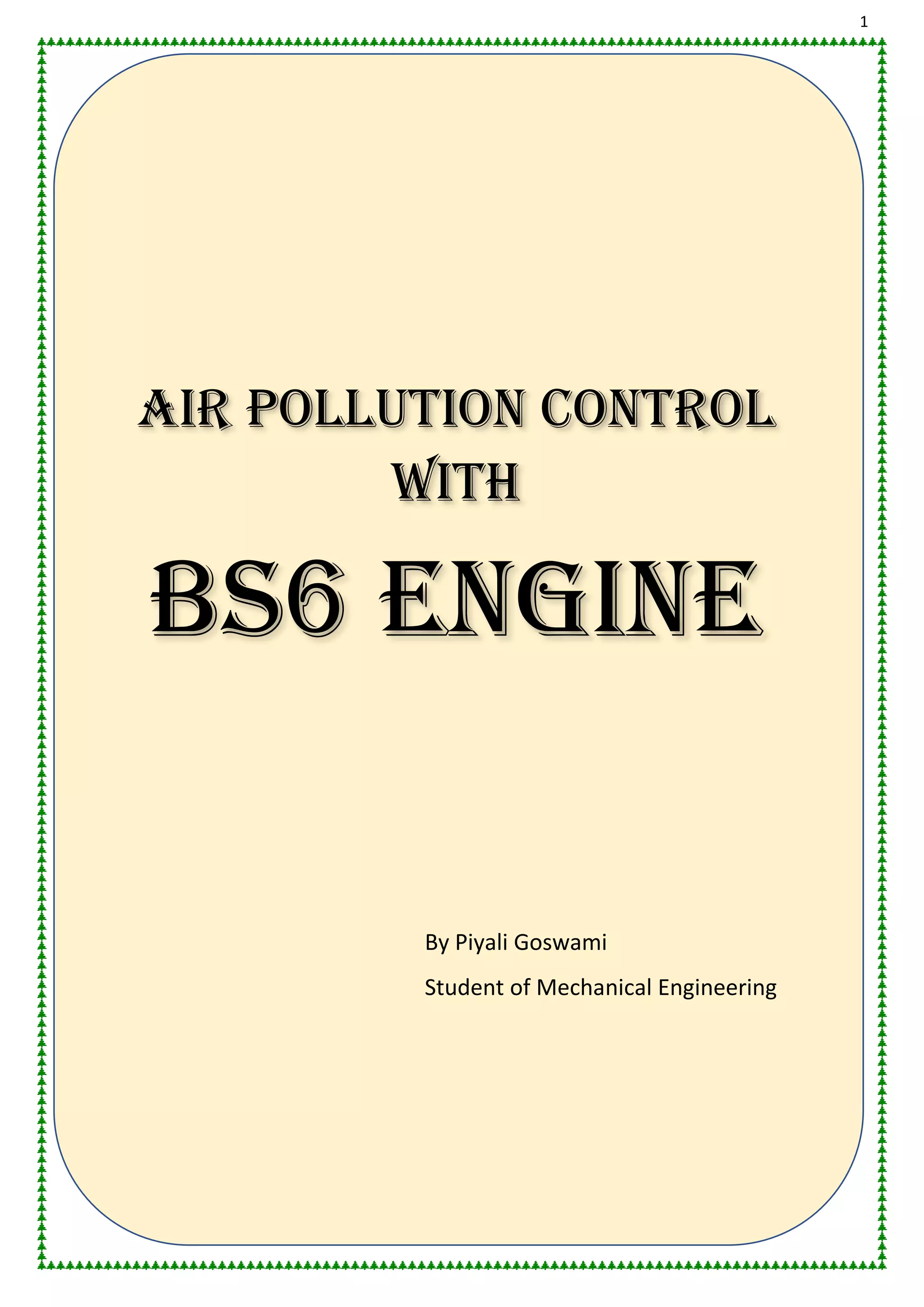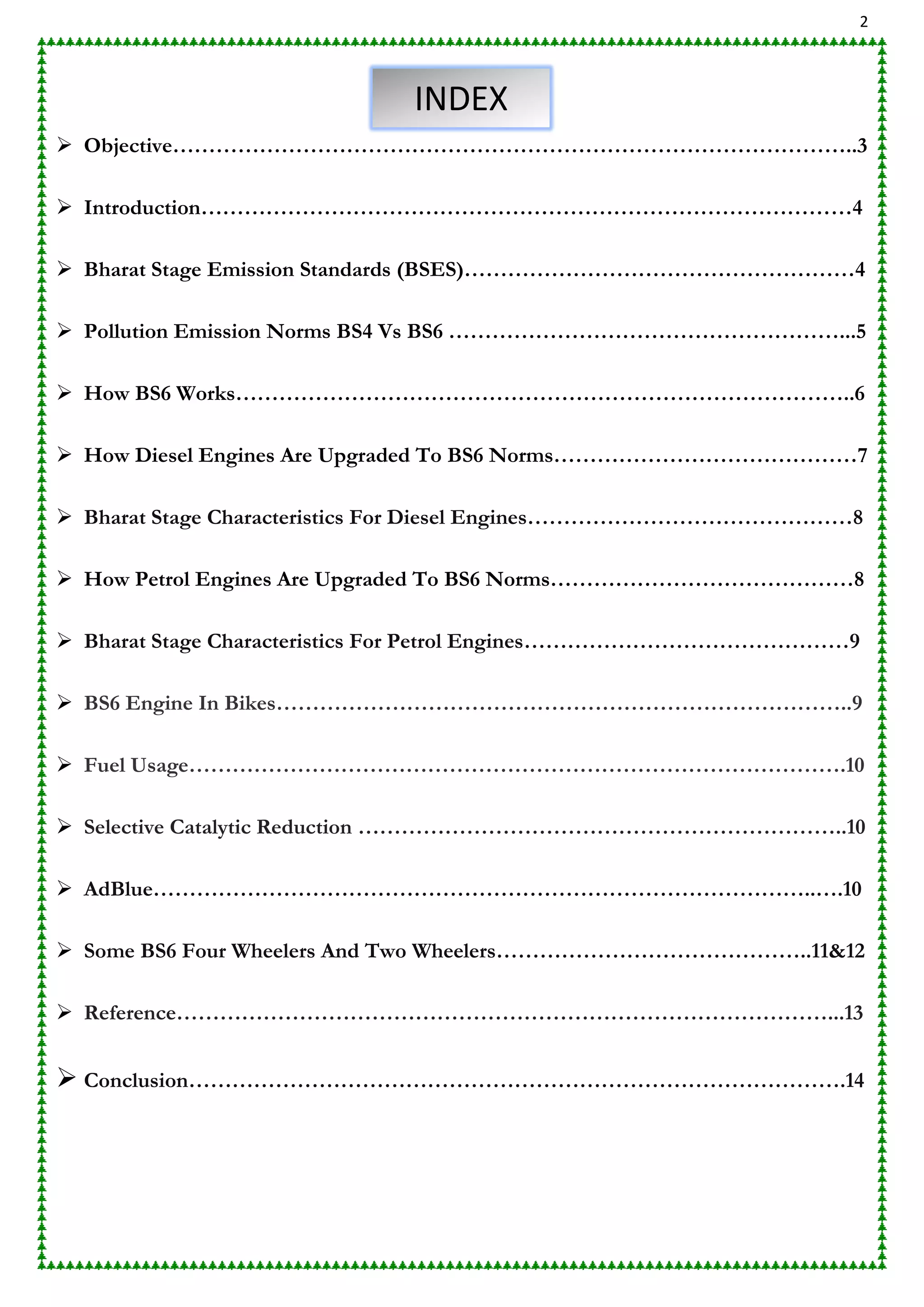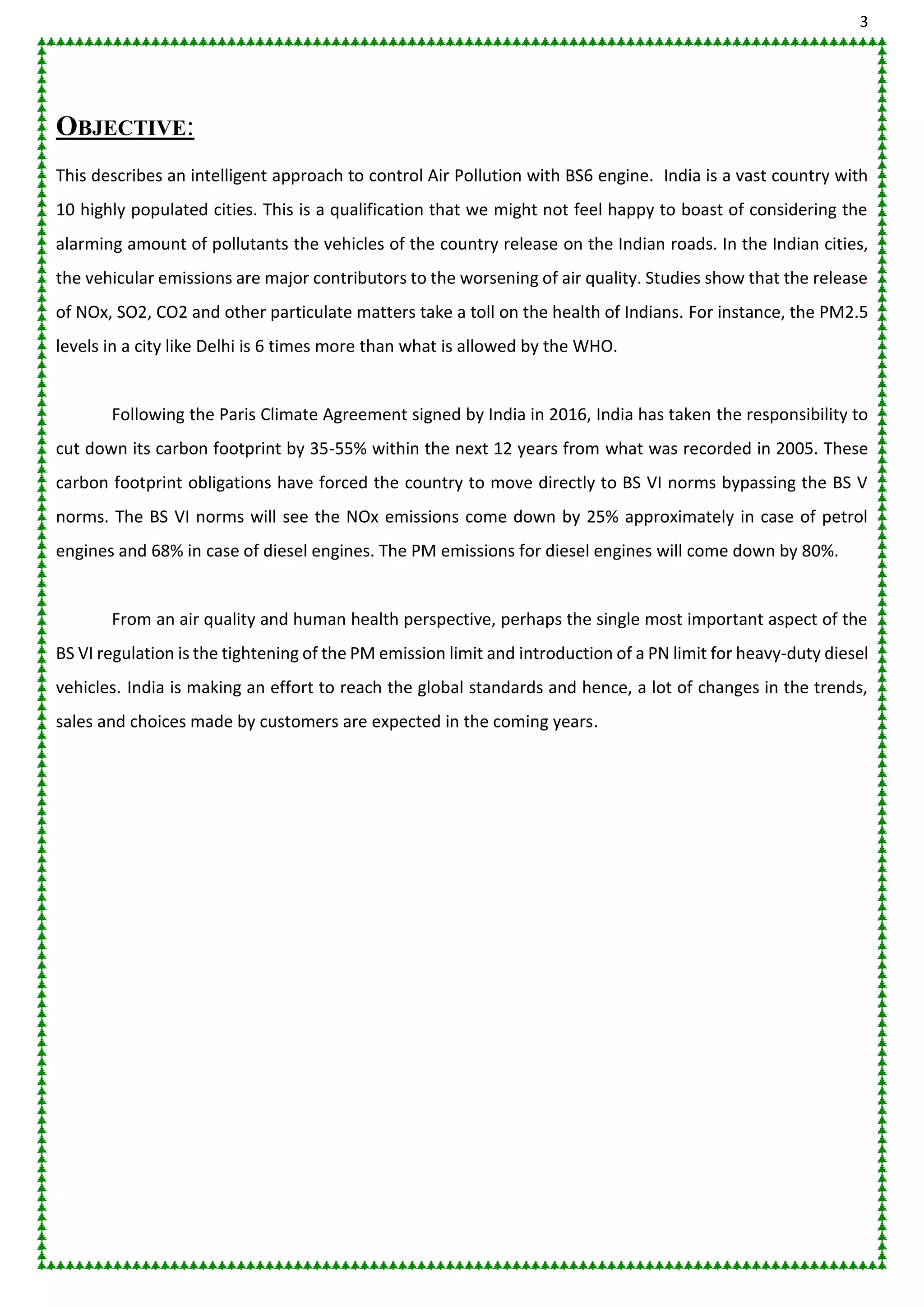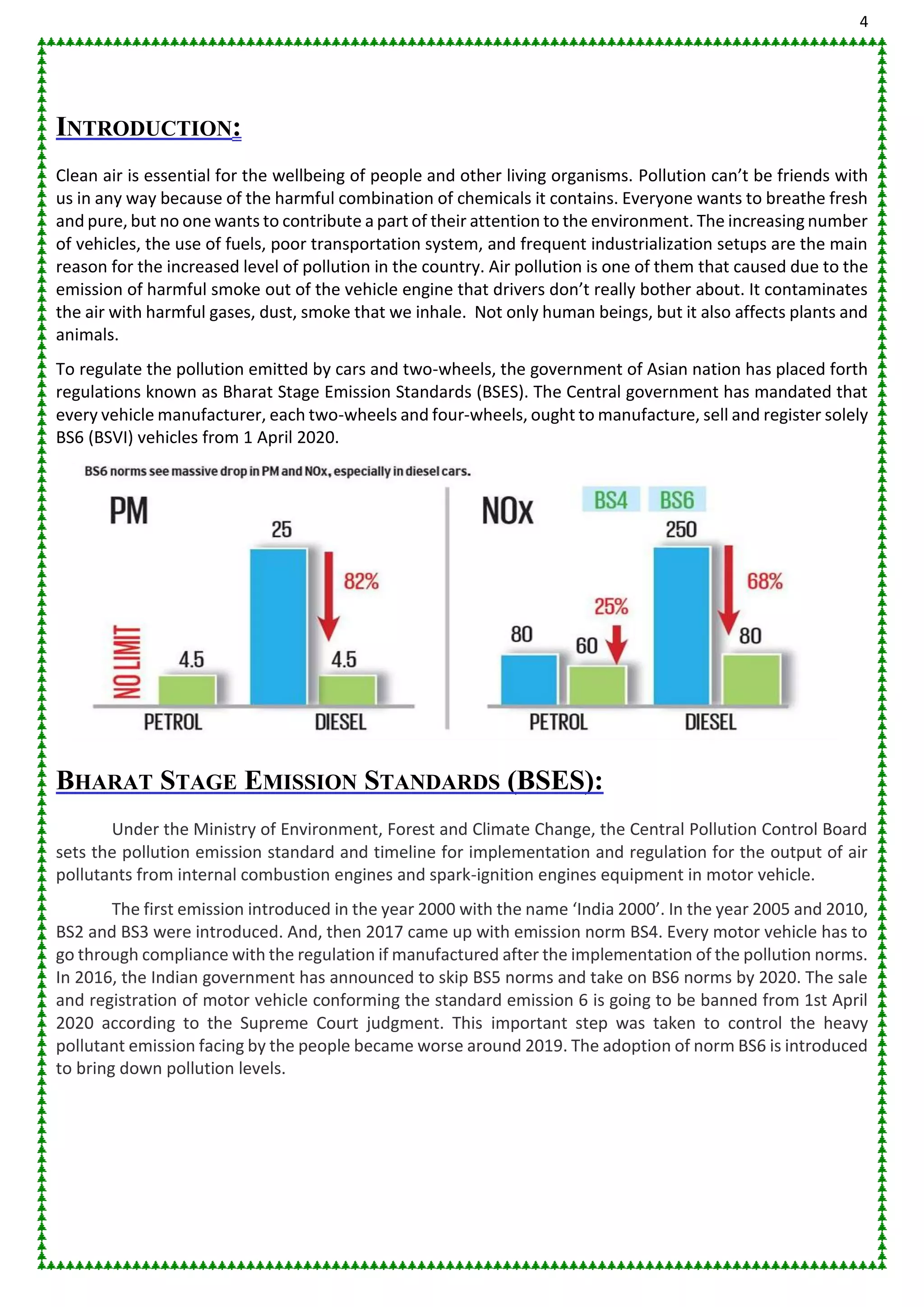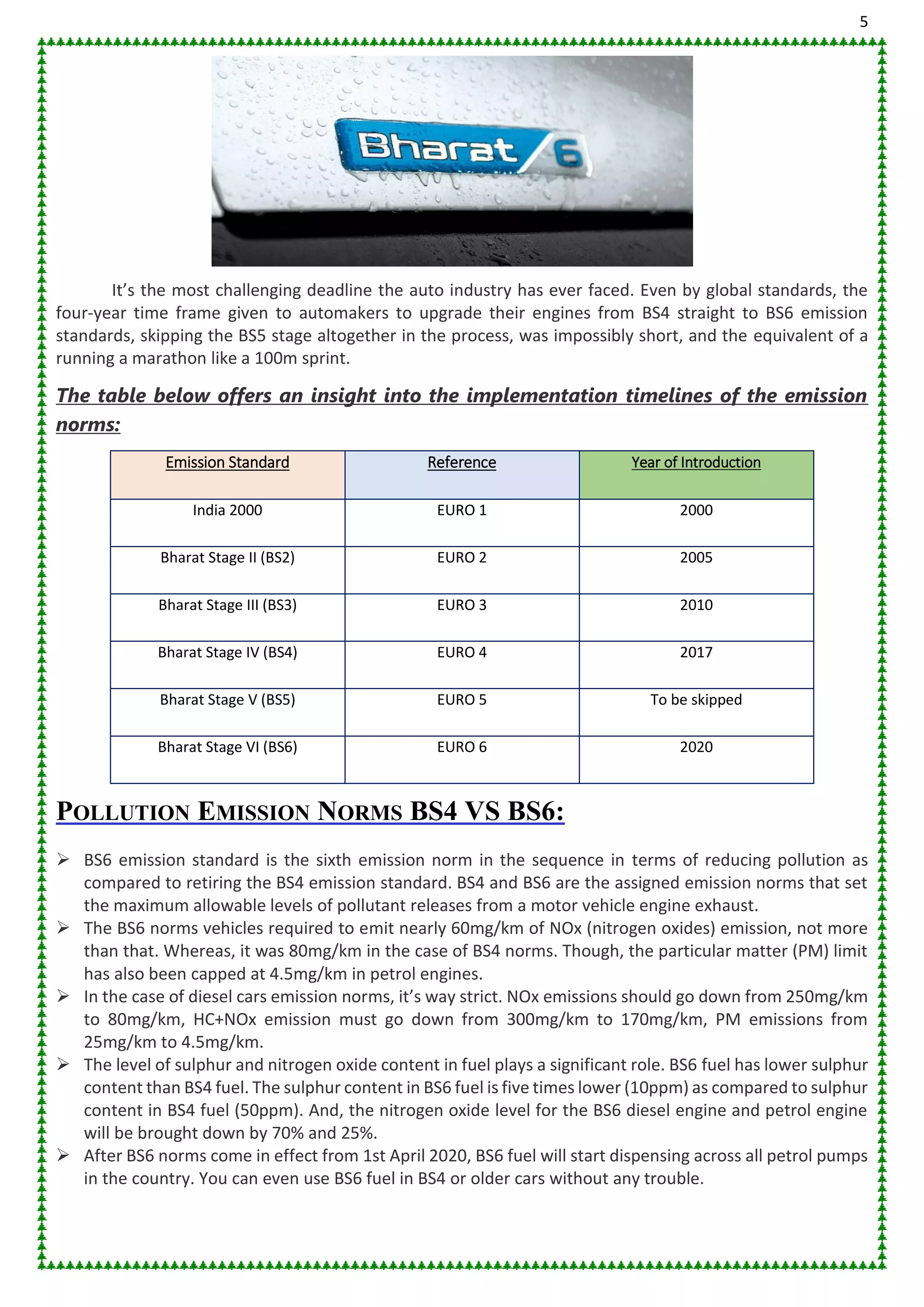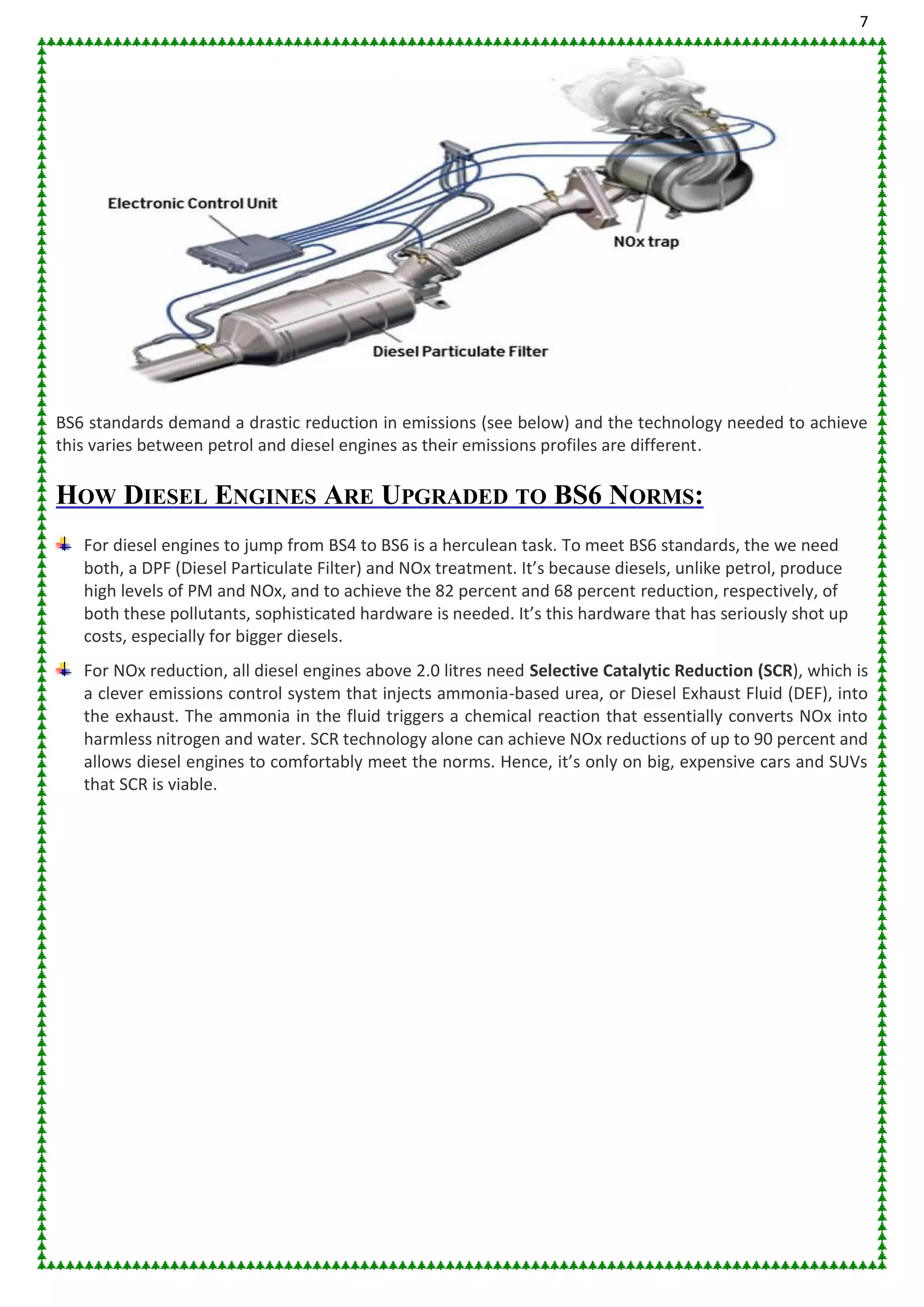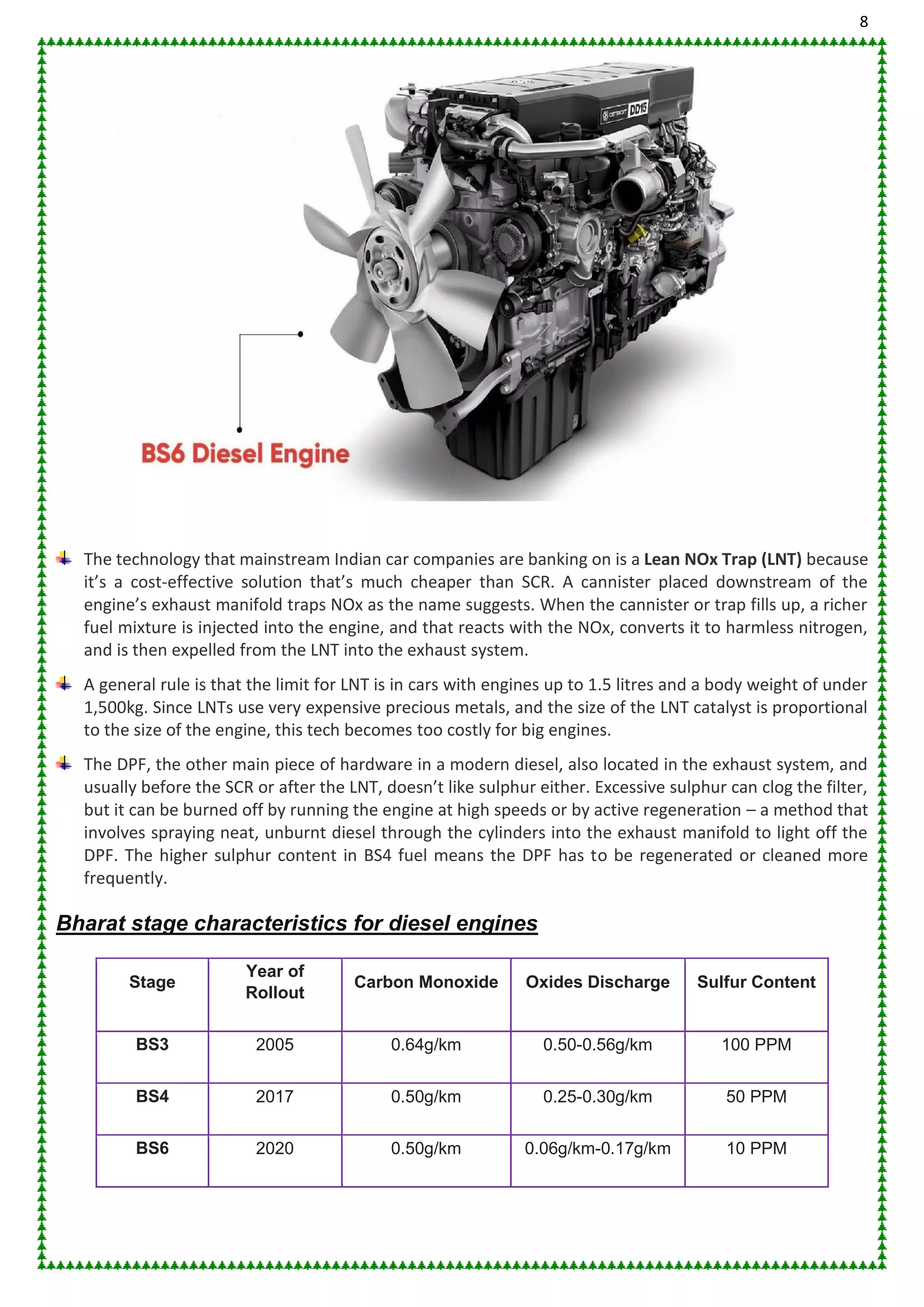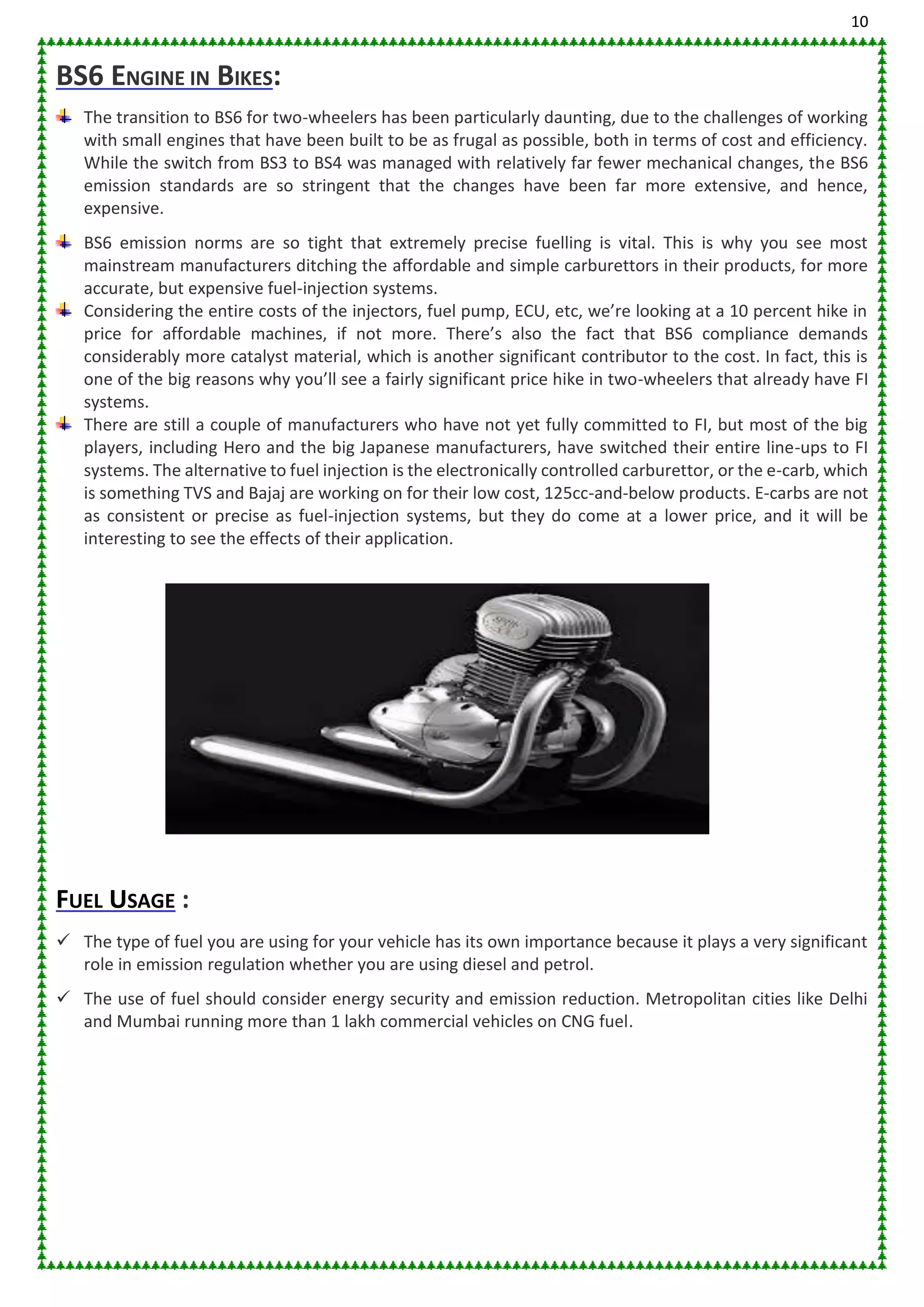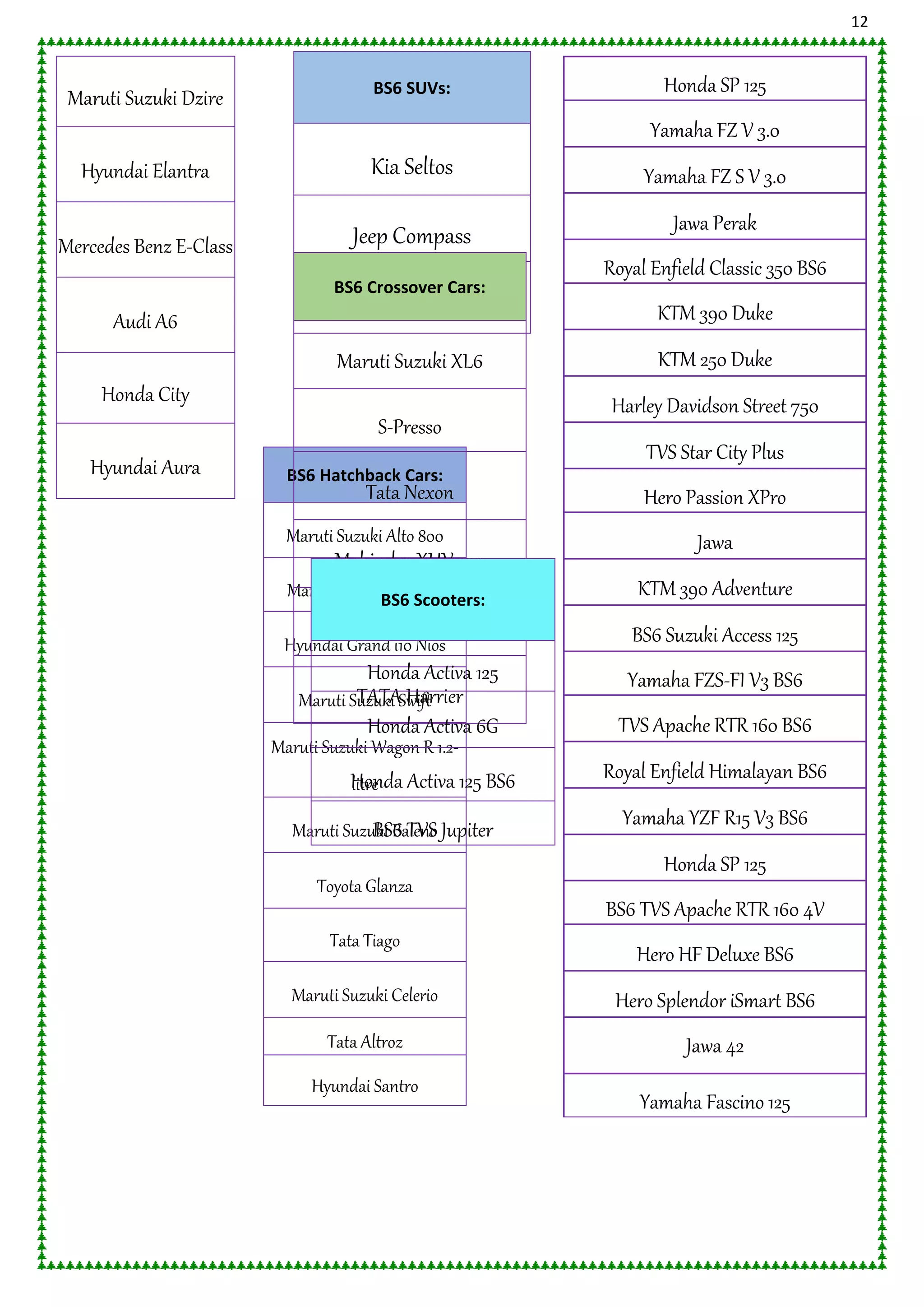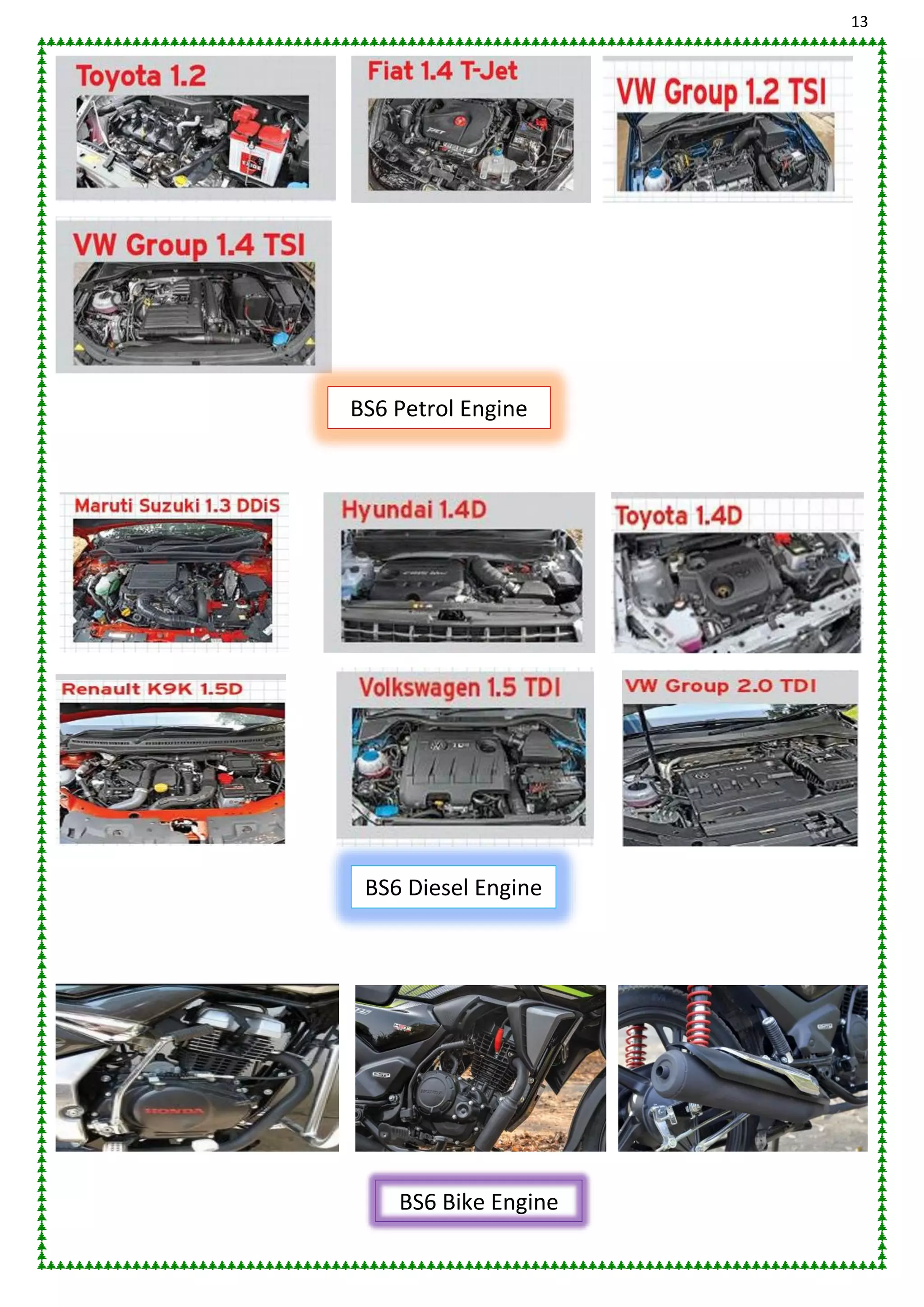The document discusses the Bharat Stage VI (BS6) emission norms implemented in India to control air pollution from vehicles, emphasizing their significance in reducing harmful emissions by significant percentages. The transition from BS4 to BS6 involves complex upgrades for diesel and petrol engines, introducing technologies like selective catalytic reduction (SCR) and diesel particulate filters (DPF) to meet stricter pollution standards. This shift aims to align Indian vehicle emissions with global standards, while also highlighting the challenges faced by manufacturers and the expected changes in fuel usage and vehicle technology.
